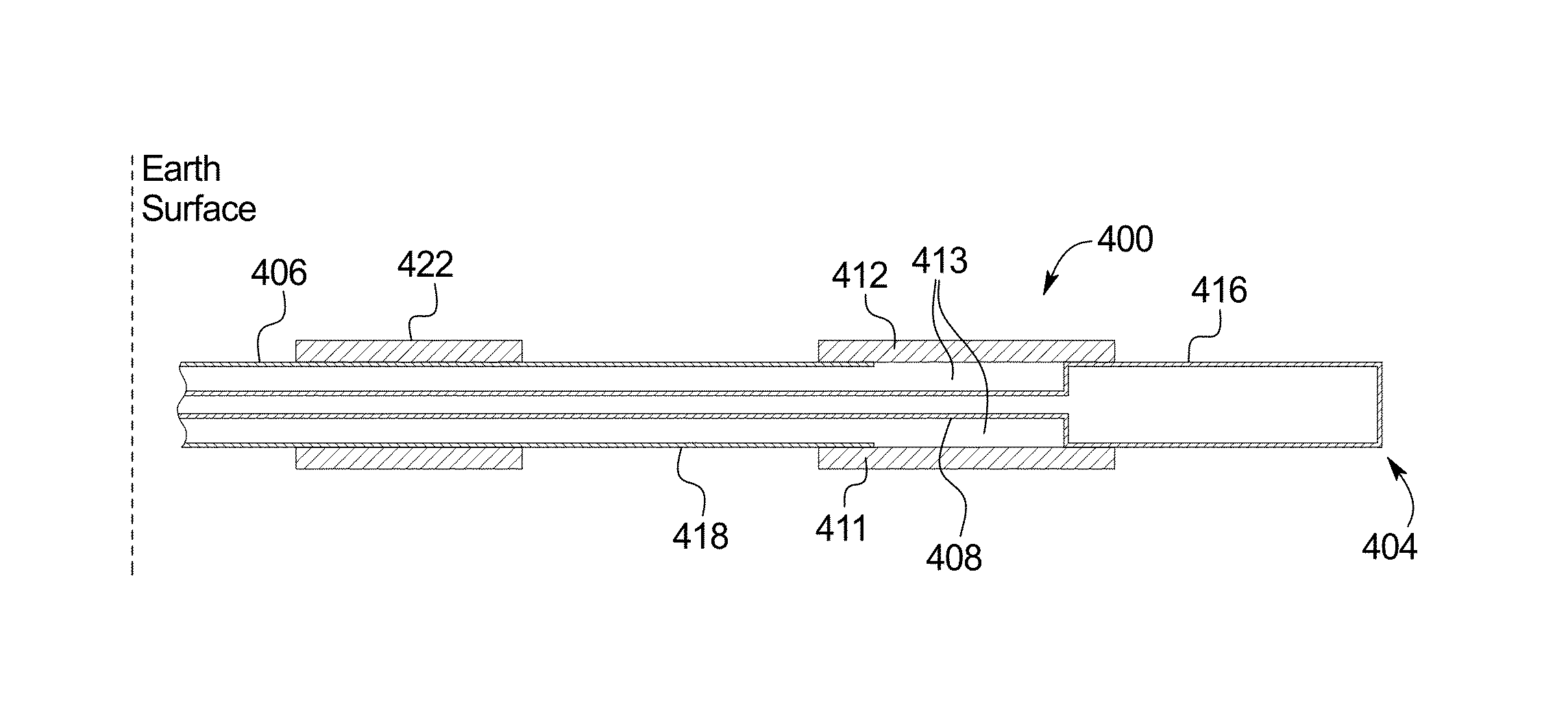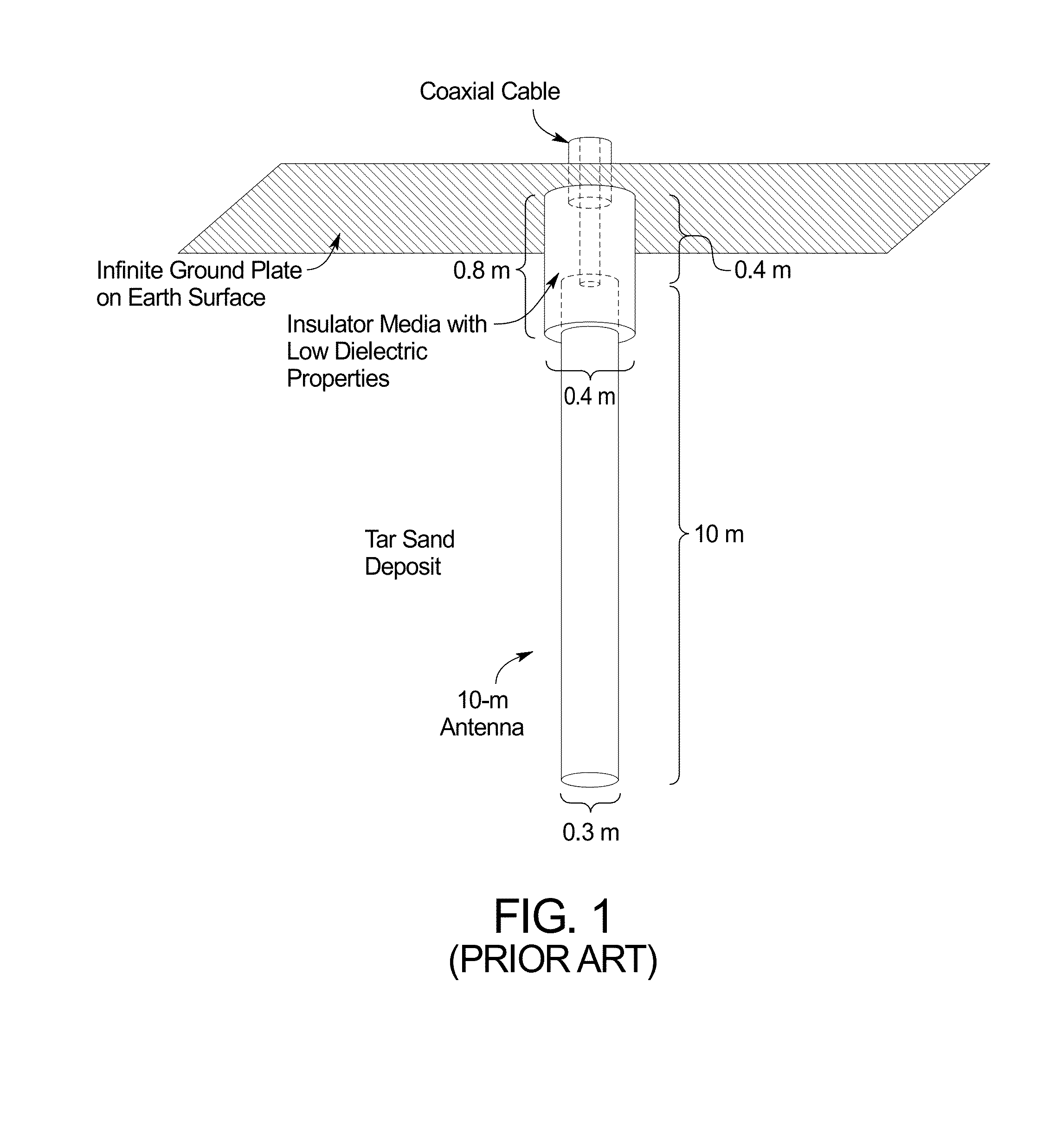Stimulating production from oil wells using an RF dipole antenna
a technology of dipole antenna and oil well, which is applied in the direction of instruments, detection using electromagnetic waves, and borehole/well accessories, etc., can solve the problems of more time, energy and money-consuming extraction process, oil is more difficult to extract, and conventional systems fail to deliver uniform heating to the formation, so as to reduce the effectiveness of such heaters and efficient use of rf energy
- Summary
- Abstract
- Description
- Claims
- Application Information
AI Technical Summary
Benefits of technology
Problems solved by technology
Method used
Image
Examples
Embodiment Construction
[0035]While the invention is susceptible to various modifications and alternative forms, specific embodiments have been shown by way of example in the drawings and will be described in detail herein. It should be understood, however, that the invention is not intended to be limited to the particular forms disclosed. Rather, the invention is to cover all modifications, equivalents, and alternatives falling within the spirit and scope of the invention as defined by the appended claims.
[0036]A heater that can be installed in a borehole such as an oil well has a number of useful applications, some of which are described in a separate section below. For example, heating around the borehole can lower the viscosity of oil, increasing its flow rate into the well. Such heaters are of two main types: 1) Resistance heaters that produce heat in the well, and 2) RF antenna heaters that heat by producing RF fields and associated currents in the formation near the well. Resistance heaters depend o...
PUM
 Login to View More
Login to View More Abstract
Description
Claims
Application Information
 Login to View More
Login to View More - R&D
- Intellectual Property
- Life Sciences
- Materials
- Tech Scout
- Unparalleled Data Quality
- Higher Quality Content
- 60% Fewer Hallucinations
Browse by: Latest US Patents, China's latest patents, Technical Efficacy Thesaurus, Application Domain, Technology Topic, Popular Technical Reports.
© 2025 PatSnap. All rights reserved.Legal|Privacy policy|Modern Slavery Act Transparency Statement|Sitemap|About US| Contact US: help@patsnap.com



